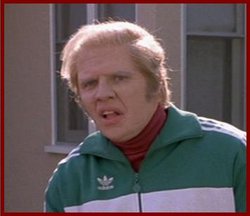The concept of multiple alternate realities is far from new. It is a continuing theme in much of our pop culture, especially in the realm of science fiction. Grand television series such as Lost, Alcatraz, and Fringe placed extension emphasis on this concept. Dallas, one of the most popular mainstream non-science fiction shows in history, also embraced this concept, only they have never formally admitted to doing so.
Franchises like Star Trek routinely utilize alternate realities to supplement their normal stories. We, as an audience, readily accept this because it makes sense in the context of their stories. More importantly, meandering into alternate realities provided viewers with highly regarded and iconic episodes like Mirror, Mirror. The Mirror Universe is a perversion of what Trek audiences had known to that point. Characters are significantly changed with a darker edge; the very nature of the Enterprise's mission is absolutely changed. This imagery and characterization struck a strong enough chord with audiences to inspire both a prequel and a couple of sequels.
 |
| Somehow more futuristic than later ships... |
Star Trek is merely an example of the road we are about to travel, both in this post and beyond. It is by no means the foundation for what follows, but may be a strong influence. Mostly Star Trek fills the role of an easily identifiable and culturally relevant example of alternate realities. The 2009 film strongly demonstrates how much the franchises' caretakers embrace this concept, at least as a plot device.
 |
| Pictured: Neither Nimoy nor Shatner |
My concept of alternate realities traces its roots to 1985. The first movie in one of the greatest film trilogies known to mankind was released that summer. At six-years-old, I was blown away by the film. Everything from the DeLorean's awesomeness to Marty's wannabe rock star personality to Biff getting his comeuppance to Doc whipping into the driveway with a now flying DeLorean really registered with my younger self. Yet I left the theater uneasy about a few things that transpired, specifically the ending.
 |
| Great Scott! |
 |
| This is not Marty's Biff |
Another major cultural landmark also arrived in 1985, though I would not discover it until later. With a mess of characters, back stories, and continuity as a whole, DC comics took a radical step to bring their properties in line. Crisis on Infinite Earths sought to eradicate duplicate characters and fix the disaster at DC. The event had such a profound impact that its aftershocks are still being felt today.
More important than the event, at least to me, is the title. The very idea of an infinite number of Earths, each with slight differences from the rest, resonated very strongly with my Doc Brown influenced young mind. Seeing a planet in which the heroes we know are villains opened my eyes to the potential that even the smallest changes can make to our lives, our world, and our destinies.
 |
| Sometimes for the bat shit crazy |
These two pieces of fiction provide the backbone for my theory of alternate realities. Other fictitious works definitely play a role, as do some scientific theories. Like all scientific pursuits, logic plays a role. Religion, as unlikely as that seems, does too. As time goes on, I will elaborate more on exactly how religion not only plays a role, but actually supports my belief.
It must be stated that while I strongly believe in the possibility of alternate realities, I am not beholden to the concept like a fanatic. For the most part, the theory of multiple realities provides entertainment through speculation. I am definitely not a certifiable expert on the subject and I do not expect anybody to agree with my interpretation of this theory. This post and all that will follow exist to share my thoughts with others.
Pay attention to the cultural items mentioned above. Many will return in various forms as time passes. Like Seth MacFarlane, the pop culture of my youth still carries weight in my work. Positive images and experiences from childhood can be quite influential indeed.
 |
| More accurate & better than the Liam Neeson movie |
*I plan to discuss this at length in a future post. For the purposes of this post, my short summary and conclusion serve to provide a framework for the topic.

No comments:
Post a Comment